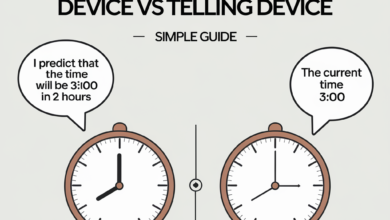Navigating the complexities of modern technology often brings users face-to-face with cryptic error messages. Among these, the errordomain=nscocoaerrordomain&errormessage=could not find the specified shortcut.&errorcode=4 by Error Code 4, can be both frustrating and disruptive. In this article, we’ll delve into the nature of this error, uncover its root causes, and provide practical solutions to resolve it.
Decoding the Error Message
What Does “NSCocoaErrorDomain” Mean?
To understand this error, we must first decode its context. The term NSCocoaErrorDomain refers to a category of errors within Apple’s Cocoa framework, which powers macOS and iOS applications. These errors typically relate to file handling, permissions, or system interactions, serving as a diagnostic tool for developers.
When the system encounters an issue, it assigns the problem to a domain like NSCocoaErrorDomain and tags it with a code—in this case, Error Code 4. This framework helps users and developers pinpoint the source of issues more effectively.
Breaking Down the Error Components
The message “Could not find the specified shortcut” implies that the system is searching for a shortcut or file path that no longer exists or is inaccessible. Combined with Error Code 4, this indicates a specific failure in locating a required resource, such as a symbolic link or app-specific shortcut.
Scenarios Where This Error Commonly Appears
This error is frequently encountered in the following situations:
- When launching an application that relies on custom shortcuts.
- While attempting to access external resources linked to an app.
- During software updates where old shortcuts become incompatible.
Root Causes of Error Code 4
Issues with Shortcuts
Shortcuts are critical in streamlining workflows, but they can become problematic when corrupted or deleted. In some cases, shortcuts created in older system versions fail to migrate properly during updates, leading to errors.
File Path or Resource Errors
Outdated or incorrect file paths often trigger this error. If an application relies on a file stored in a specific location and that file is moved or renamed, the shortcut becomes invalid, resulting in Error Code 4.
Permission Restrictions
Modern operating systems prioritize security, often restricting access to certain files or directories. Without the necessary permissions, applications may fail to retrieve required shortcuts.
Outdated or Incompatible Software
When applications or frameworks are not updated to align with the latest system versions, compatibility issues arise. This often results in NSCocoaErrorDomain errors as outdated software attempts to interact with current system protocols.
Step-by-Step Solutions to Resolve the Error
Verify the Shortcut Path
Begin by examining the shortcut causing the error. Locate the file or folder it references and ensure the path is correct. If the shortcut is broken, you can recreate it by linking it to the appropriate file or directory. Tools like Finder in macOS make this process straightforward.
Grant Necessary Permissions
Check the permissions associated with the shortcut or application. Navigate to the Get Info window of the file in question and verify that the required app or user has access. If permissions are insufficient, adjust them accordingly by granting Read & Write access.
Update Software and Frameworks
Outdated software is a common culprit behind Error Code 4. Regularly update your applications and operating system to ensure compatibility. This not only resolves existing issues but also prevents future occurrences.
Reset or Recreate Shortcuts
If verifying the path and updating permissions do not work, consider deleting and recreating the problematic shortcut. Use macOS utilities like Terminal to create symbolic links, ensuring they point to the correct locations.
Advanced Troubleshooting
For persistent errors, utilize tools like Console in macOS to examine logs. These logs provide detailed insights into what the system was attempting when the error occurred, allowing you to pinpoint and resolve the underlying problem.
Preventing Future Occurrences
Best Practices for Shortcut Management
To avoid errors like this in the future, maintain a clean and organized shortcut library. Regularly audit your shortcuts, deleting those that are outdated or no longer functional.
Keeping Systems and Apps Up-to-Date
Enable automatic updates for your operating system and applications to ensure that compatibility issues are addressed proactively. Staying updated minimizes the risk of encountering NSCocoaErrorDomain errors.
Proactive Permissions Management
When installing new software, grant necessary permissions carefully and monitor app activities. Regularly review and manage app permissions in System Preferences to maintain a secure yet functional environment.
Conclusion
The NSCocoaErrorDomain error, specifically Error Code 4, underscores the importance of managing shortcuts and file paths effectively in Apple’s ecosystem. By understanding the root causes and implementing the outlined solutions, users can resolve this issue efficiently. Regular maintenance of shortcuts, proactive updates, and mindful permission management are key to avoiding such errors in the future.
FAQs
What is NSCocoaErrorDomain, and why does it matter?
NSCocoaErrorDomain is a category of errors related to Apple’s Cocoa framework, which helps diagnose system or app issues.
How can I locate a missing shortcut causing Error Code 4?
Use Finder or Terminal to identify and recreate the file path linked to the shortcut.
What permissions should I grant to resolve this error?
Ensure the relevant app or user has Read & Write permissions for the file or folder in question.
How can I prevent shortcuts from becoming invalid?
Keep shortcuts organized, regularly audit their functionality, and update paths as needed.
What should I do if the error persists despite troubleshooting?
Utilize macOS Console logs to gather more information and consult with a developer if necessary.
You May Also Read: https://ventsbuzz.pro/escape-room-zombie-ville-via-risorgimento-31-20093-cologno-monzese-mi-italy/




